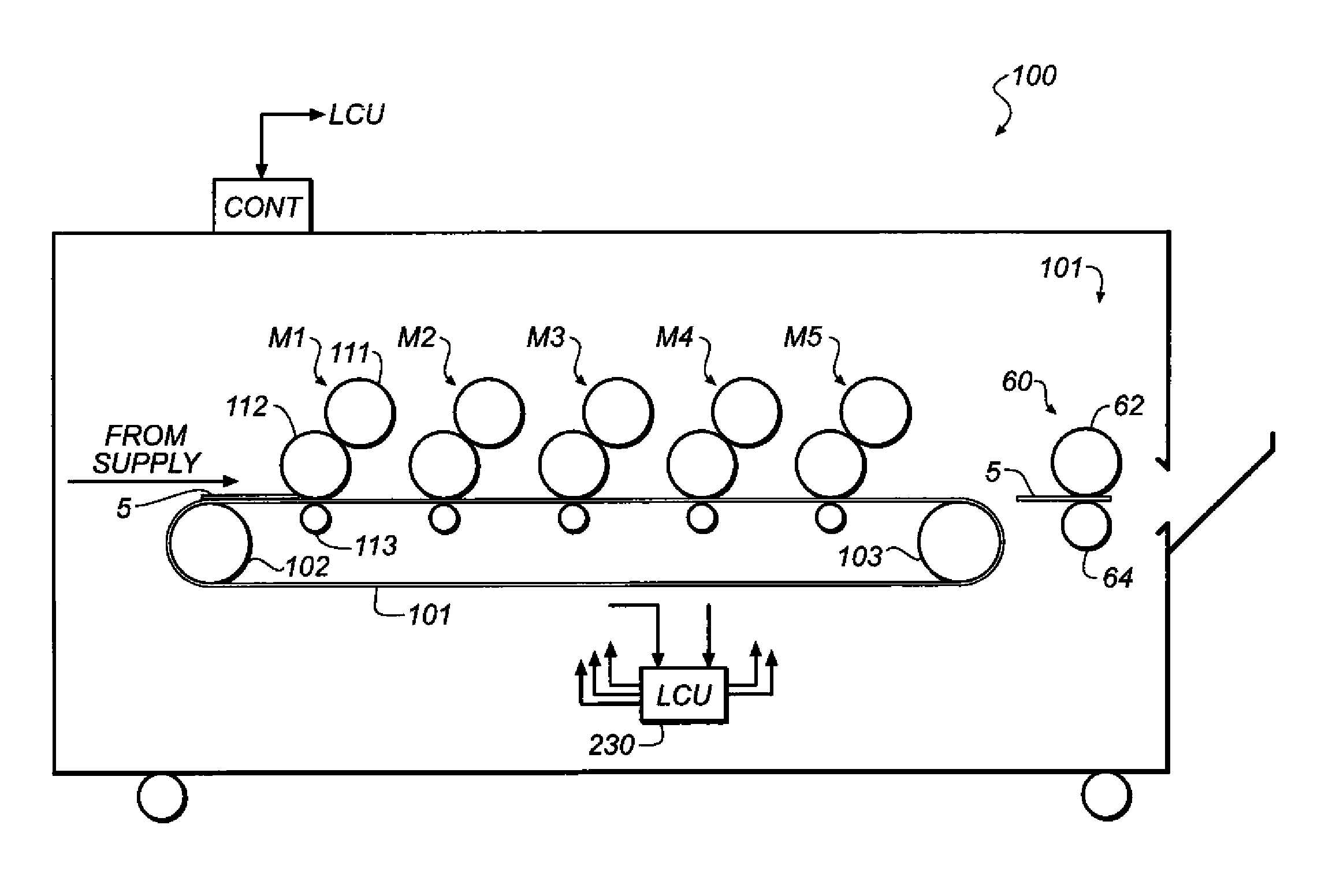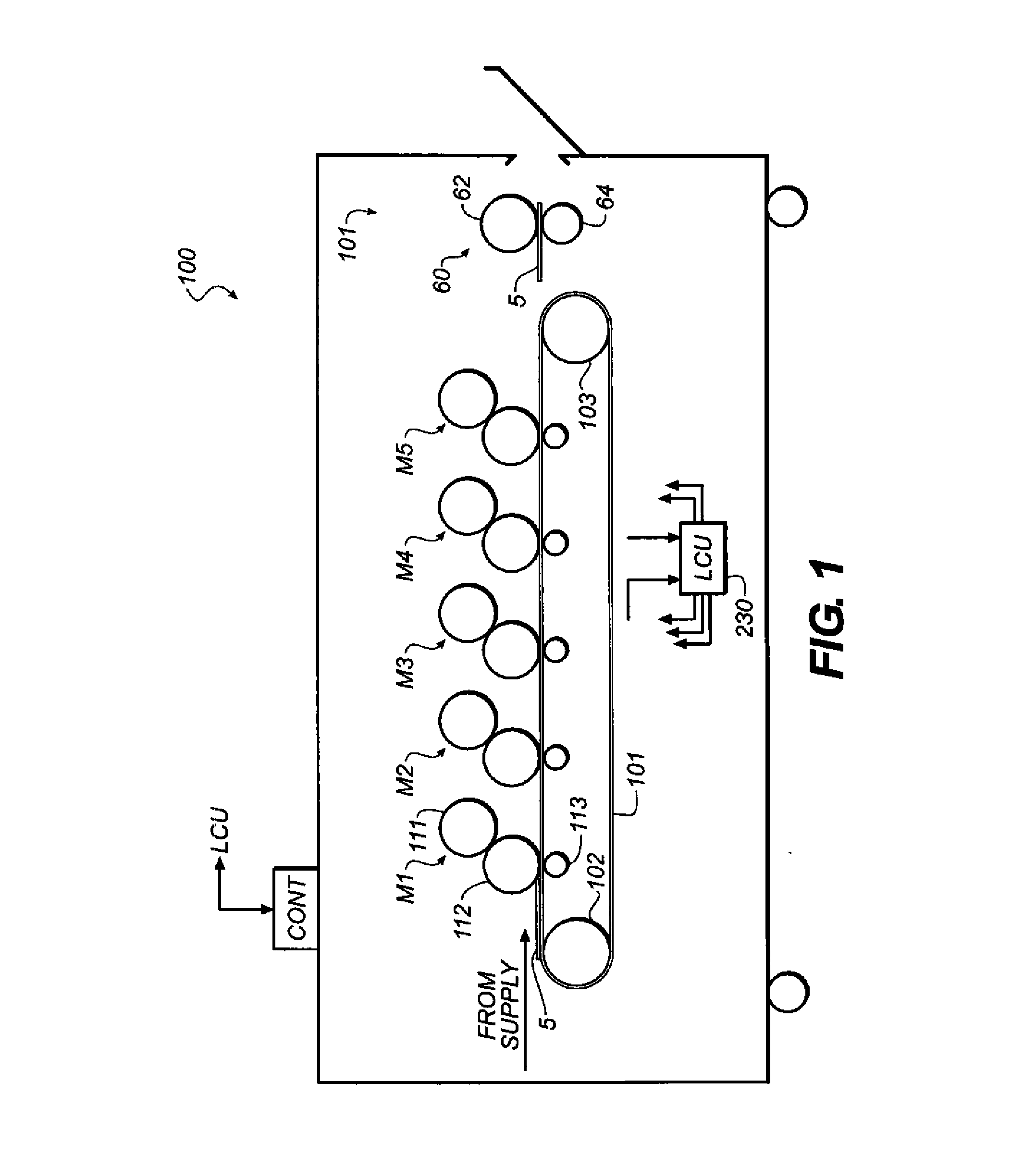Preparing toner images with metallic effect
a technology of toner image and metallic effect, which is applied in the field of preparation toner image having, can solve the problems of imperfect reproducibility of metallic hues, difficulty in reproducing gold tone through such a color mixture, and inability to easily incorporate metallic pigments, so as to enhance the original color, enhance the luster, and improve the electrostatic charging properties of metallic dry toner particles
- Summary
- Abstract
- Description
- Claims
- Application Information
AI Technical Summary
Benefits of technology
Problems solved by technology
Method used
Image
Examples
embodiment 1
[0217]2. The method of embodiment 1 comprising, developing the latent image with metallic dry toner particles and fixing to form a toner image having a metallic dry toner particle lay down that is defined by the equation, in mg / cm2:
Lay down×Dvol].
[0218]3. The method of embodiment 1 or 2 comprising:
[0219]forming the latent image as an electrostatic latent image on a primary imaging member,
[0220]electrostatically transferring the developed toner image to the receiver material to form the transferred and developed toner image, and
[0221]fixing the transferred and developed toner image to the receiver material at a temperature of at least 135° C.
[0222]4. The method of any of embodiments 1 to 3, wherein the non-conductive metal oxide particles consist essentially of: (i) a silica, alumina, or mica substrate having an outer surface, and (ii) disposed on at least part of the substrate outer surface, one or more layers of an oxide of iron, chromium, silicon, titanium, or aluminum, each of th...
embodiment 14
[0243]15. The method of embodiment 14, comprising:
[0244]forming the toner image that provides a metallic effect on the receiver material,
[0245]forming at least one color toner image over the toner image that provides a metallic effect, and
[0246]fixing both the toner image that provides a metallic effect and the at least one color toner image to the receiver material.
[0247]16. The method of embodiment 14 or 15, comprising:
[0248]forming at least one color toner image over the toner image that provides a metallic effect,
[0249]forming the toner image that provides a metallic effect on the receiver material, and
[0250]fixing both the toner image that provides a metallic effect and the at least one color toner image to the receiver material.
[0251]17. The method of any of embodiments 14 to 16, wherein the non-conductive metal oxide particles consist essentially of (i) a silica, alumina, or mica substrate having an outer surface, and (ii) disposed on at least part of the substrate outer surf...
PUM
| Property | Measurement | Unit |
|---|---|---|
| mean volume weighted diameter | aaaaa | aaaaa |
| mean volume weighted diameter | aaaaa | aaaaa |
| aspect ratio | aaaaa | aaaaa |
Abstract
Description
Claims
Application Information
 Login to View More
Login to View More - R&D
- Intellectual Property
- Life Sciences
- Materials
- Tech Scout
- Unparalleled Data Quality
- Higher Quality Content
- 60% Fewer Hallucinations
Browse by: Latest US Patents, China's latest patents, Technical Efficacy Thesaurus, Application Domain, Technology Topic, Popular Technical Reports.
© 2025 PatSnap. All rights reserved.Legal|Privacy policy|Modern Slavery Act Transparency Statement|Sitemap|About US| Contact US: help@patsnap.com


